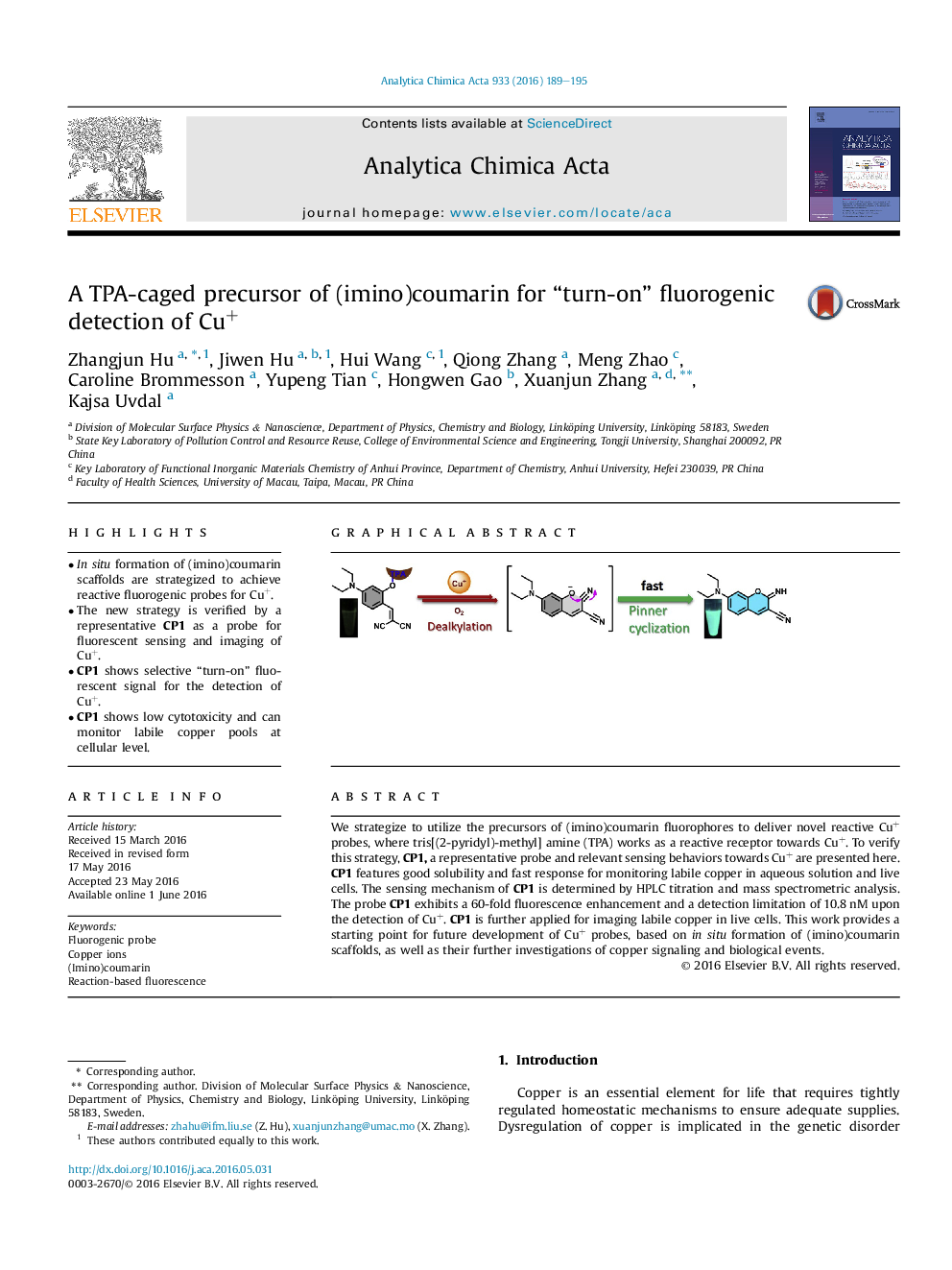| Article ID | Journal | Published Year | Pages | File Type |
|---|---|---|---|---|
| 1162855 | Analytica Chimica Acta | 2016 | 7 Pages |
•In situ formation of (imino)coumarin scaffolds are strategized to achieve reactive fluorogenic probes for Cu+.•The new strategy is verified by a representative CP1 as a probe for fluorescent sensing and imaging of Cu+.•CP1 shows selective “turn-on” fluorescent signal for the detection of Cu+.•CP1 shows low cytotoxicity and can monitor labile copper pools at cellular level.
We strategize to utilize the precursors of (imino)coumarin fluorophores to deliver novel reactive Cu+ probes, where tris[(2-pyridyl)-methyl] amine (TPA) works as a reactive receptor towards Cu+. To verify this strategy, CP1, a representative probe and relevant sensing behaviors towards Cu+ are presented here. CP1 features good solubility and fast response for monitoring labile copper in aqueous solution and live cells. The sensing mechanism of CP1 is determined by HPLC titration and mass spectrometric analysis. The probe CP1 exhibits a 60-fold fluorescence enhancement and a detection limitation of 10.8 nM upon the detection of Cu+. CP1 is further applied for imaging labile copper in live cells. This work provides a starting point for future development of Cu+ probes, based on in situ formation of (imino)coumarin scaffolds, as well as their further investigations of copper signaling and biological events.
Graphical abstractFigure optionsDownload full-size imageDownload as PowerPoint slide
